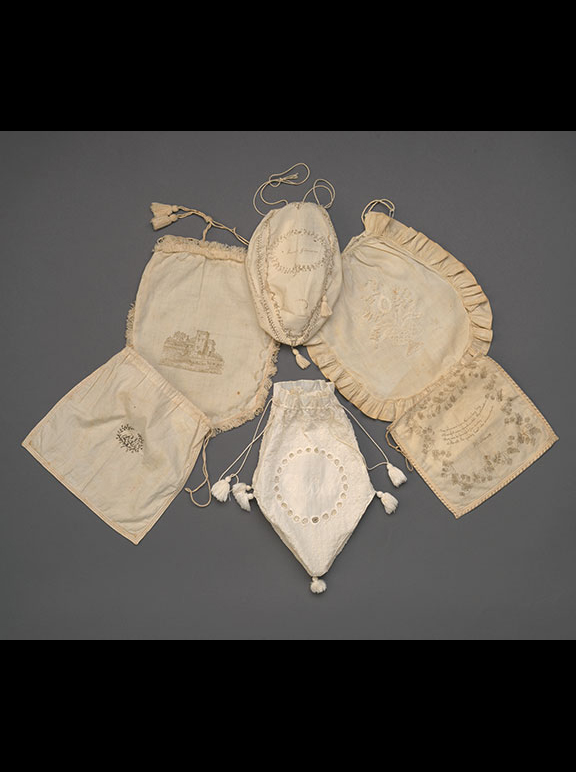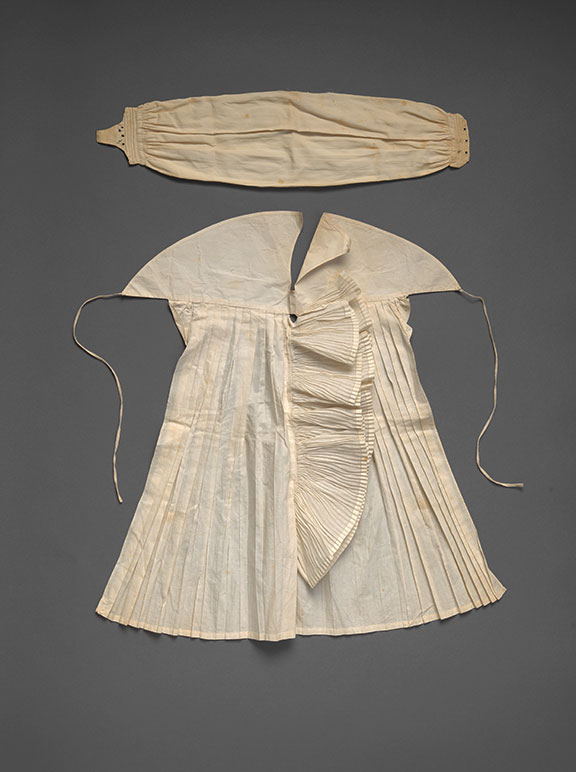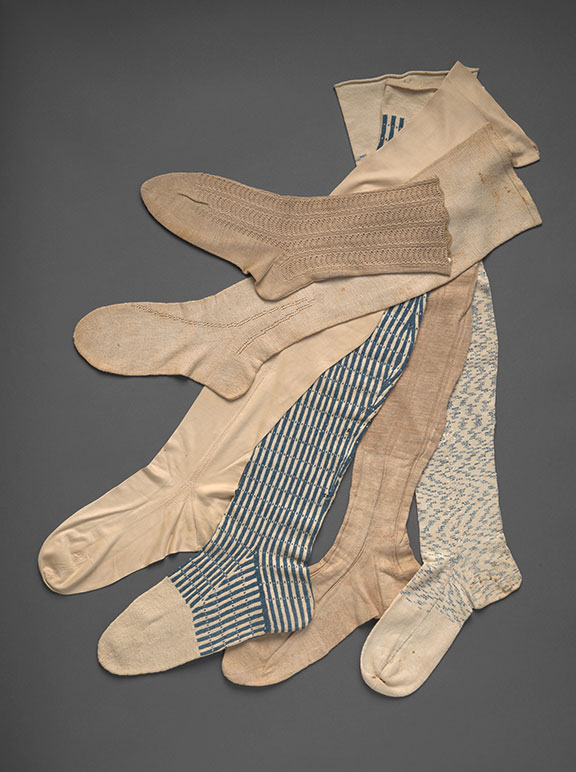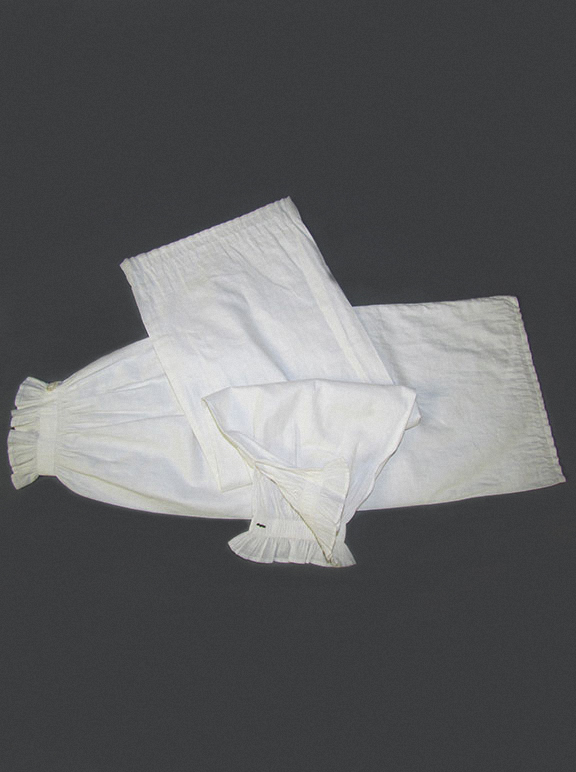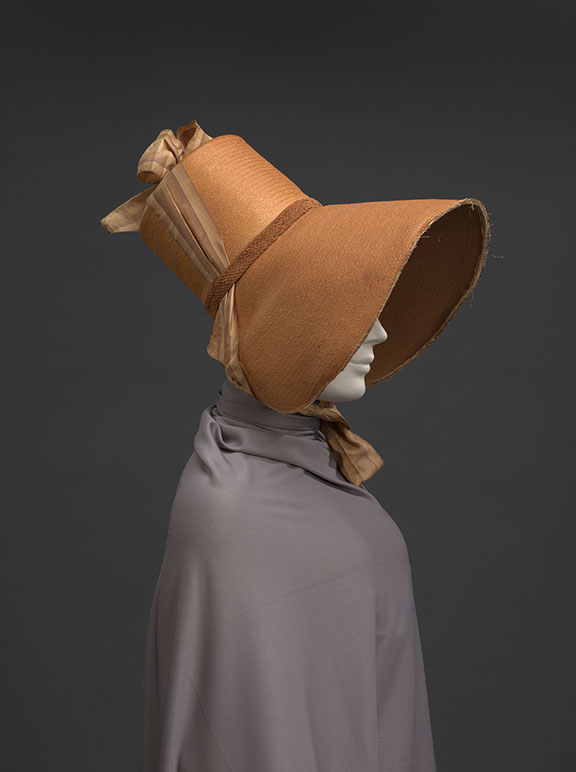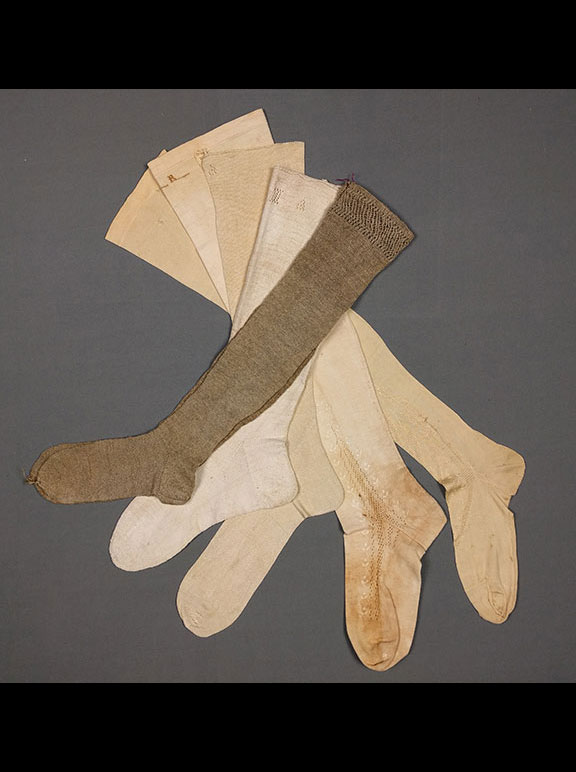Purses
White purses or “reticules,” a contemporary term for little handbags, were easily sewn and decorated at home. They coordinated beautifully with the vogue for white cotton dresses in the 1790s and early 1800s. Inked designs such as the castle (inspired by the Romantic age’s love of medieval architecture and ruins) and sentimental poems were popular embellishments, as was embroidery, which was often white but could be colored. Several of the DAR Museum’s white reticules were gifts between young women whose names are inscribed, sometimes accompanied by sentimental poems or dedications honoring friendship.
Clockwise, from top: Cotton lawn reticule with inked decoration, 1790-1820, owned by Hannah Smith Gilman, 84.34.2, gift of Claire D. Murphy in honor of Charlotte Deegan Chickering; white cotton reticule with ruffle, embroidery, and cutwork, 1800-1830, Massachusetts, 89,59.20, gift of Mary Mattoon Chapter; cotton reticule decorated with poetry in pen and ink, 1800-1825, owned by Joanna Prince, 84.4.2, gift of Henry Abbot; hexagonal cotton lawn reticule with monogram and embroidery, 1800-1830, owned by Joanna Prince, 84.4.4, gift of Henry Abbot; square cotton muslin reticule with inked monogram, 1815-1825, owned by Ruth Evans, Philadelphia, 85.80.2, gift of Margaret Merritt Broecker; fringed cotton lawn reticule with inked castle decoration, 1800-1817, owned by Caroline Gilman Odlin, 84.34.3, gift of Claire D. Murphy.

